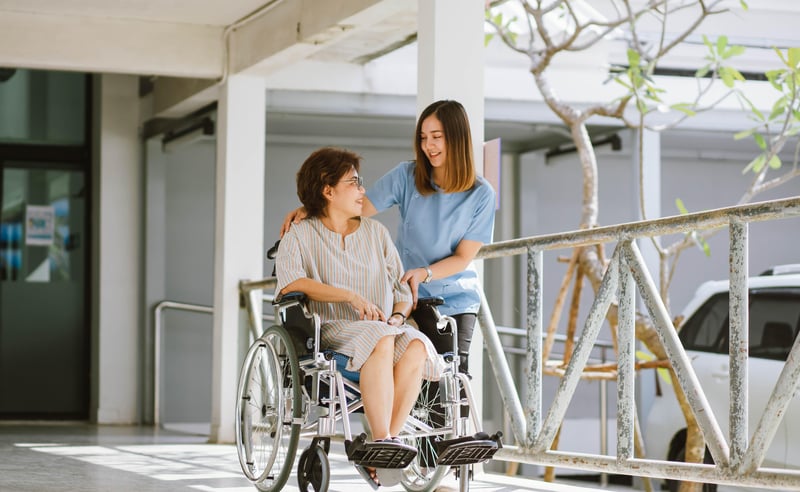Get Healthy!

- By Cara Murez HealthDay Reporter
- Posted June 27, 2022
Pandemic Lockdowns, Closures Tough on People With Disabilities
When the early days of the pandemic prompted social distancing measures and gym closures, people with certain disabilities had a much harder time getting exercise and their mental health suffered, new research shows.
Researchers studying those impacts surveyed more than 950 people with diverse disabilities. They identified four categories of individuals within the disability community with varying levels of impact, with the most affected group known as "heavily impacted."
People with neuromuscular disabilities, blindness or low vision, and/or cognitive or intellectual disabilities were more likely to be in this group. This heavily impacted group comprised about 39% of study participants, many of them veterans and women.
"People in the heavily impacted group indicated that they were either not engaging in physical activity at all or their participation was greatly diminished by pandemic safety restrictions," said study first author Jules Woolf, a professor of recreation, sport and tourism at the University of Illinois at Urbana-Champaign.
"These participants scored significantly lower on well-being indicators such as life satisfaction, self-efficacy, quality of life and general health than their peers in the other three groups we identified. They also experienced greater loneliness and depression," he said in a university news release.
Those in this group experienced the most negative impacts on their mental and physical well-being compared with peers who were either able to continue their pre-pandemic activities or adapted new ones, Woolf said.
"People with particular types of disabilities, rare or multiple impairments, may require greater assistance or additional accommodations that necessitate close contact and are incompatible with social distancing policies," he said.
The team used six different scales to assess participants' mental health and well-being, quality of life, satisfaction with their physical health, frequency of feeling lonely or depressed, self-esteem and overall life satisfaction.
Slightly more than half of those surveyed had mobility impairments, limb loss or deficiency, 16% had neuromuscular impairments and 11% had brain injuries. About 59% of study participants were male. About a third were veterans.
Study participants who stayed active engaged in varied activities from outdoor aerobic sports such as walking, running and wheelchair pushing to cycling, weightlifting, target sports, boxing, golf and water sports such as swimming and kayaking.
People in the resilient group reported the highest quality of life and general health. These individuals comprised about 21% of those surveyed. They experienced minor impact on the types of activities they engaged in and the amount of time they spent performing them, according to the findings.
By comparison, the adapted group, which was about 27% of study participants, changed the type of activities they engaged in and participated virtually, in person or alone.
The radically changed group discovered new physical activities, especially those they could do alone, including running, walking and online activities. This was more than 12% of the total participants.
The mental health and well-being scores of people in the radically changed and adapted groups were comparable across all the outcomes, the researchers found.
However, even for those who managed to navigate pandemic restraints, the outcomes were not always beneficial to their mental health.
"This was observed with the radically changed group and their greater frequency of depression compared to the resilient group," Woolf noted. "One potential explanation is that the radically changed group tended to engage in activities alone and virtually that may have contributed to feelings of isolation."
Researchers said it's crucial to understand how public policies around major events like COVID-19 affect people with disabilities and to develop promotions that target them.
The findings were published recently in the journal Leisure Studies.
More information
The U.S. Department of Health and Human Services has tips for staying active with a disability.
SOURCE: University of Illinois at Urbana-Champaign, news release, June 20, 2022






